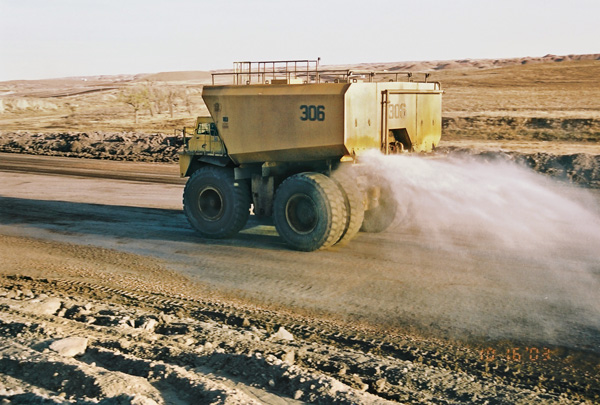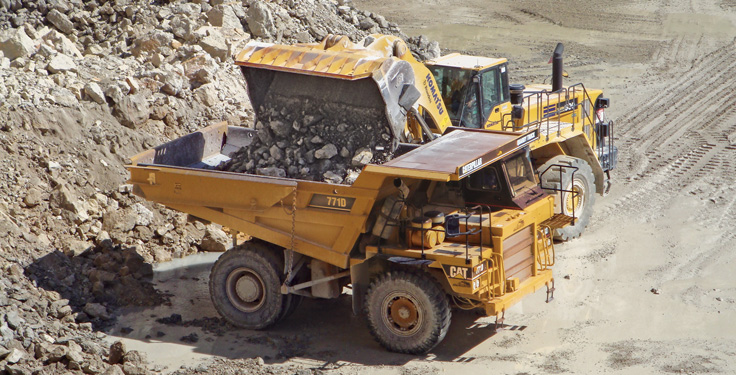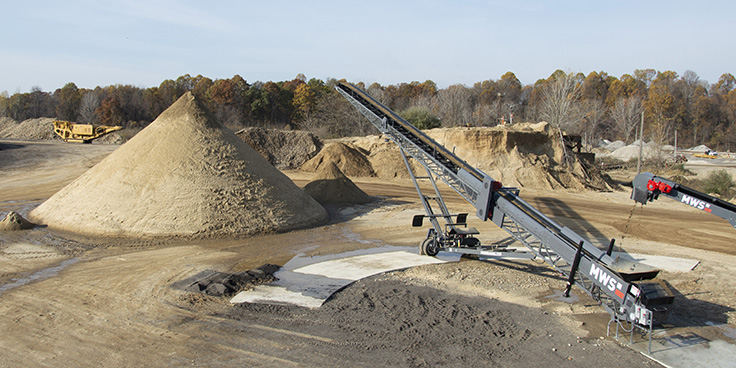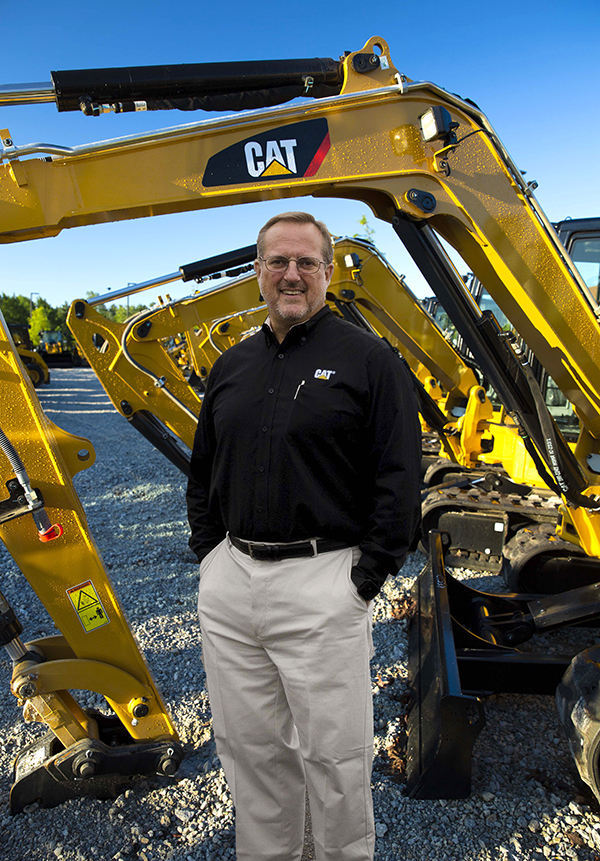
For smaller haul trucks, such as those used in quarries, gold mines and environments that use haul trucks in areas with low-overhead clearances, operations should consider a custom rear-eject truck body.
Like their counterparts, rear-eject bodies are fully customized for the operation and designed to keep material in the truck and off the haul road. Rear-ejects offer additional benefits for efficiency and operator safety.
Rear-eject bodies provide an ideal solution for constructing haul roads because they operate by pushing material out the back of the truck body in a controlled fashion.
This prevents the need to stop and raise the truck bed to dump material and allows for more even spread of the material along the haul road’s path. Additionally, rear-ejects provide greater stability and the option to operate safely in low-clearance areas.
Once the initial phase of building the haul road is complete, operations can pair their rear-eject with a material spreader attachment for finishing touches and ongoing maintenance. Material spreader attachments round out the haul road building process, as they fine-tune and place any additional material needed for a smooth surface.
Later, material spreaders fill in maintenance gaps – both literally and figuratively – to maintain a good base layer of material, effectively addressing the washboard effects common on gravel roads. Some material spreaders handle aggregates from very fine up to 2 in. with a spread width adjustable between about 5 ft. and 60 ft. or more.
The spreader attachment also increases haul road maintenance efficiency when dealing with the effects of winter weather. When snow and ice lead to dangerous haul road conditions, the traditional action is to dedicate crews of up to four people to spend a whole day spreading sand for safety. This reallocation of labor and resources negatively affects the mine’s overall efficiency.
With a rear-eject body and material spreader, a single operator can effectively distribute sand, grit or other crushed aggregate from the comfort of the vehicle’s cab, resulting in better workforce utilization and increased productivity for the mining operation.
Water tanks for the win
Another integral product for haul road maintenance is a water tank.
Often overlooked in importance, the water truck serves as an important tool for meeting U.S. Environmental Protection Agency dust restrictions and extending the life of haul roads.
Still, to maximize safety and efficiency, a customized solution offers the best option. By incorporating a custom water tank design, mines can convert an older haul truck into a water truck, extending the life of the truck and maximizing their equipment investment. Properly spraying down haul roads prevents dust from migrating from haul roads, thereby reducing the need to add more material as time goes on.
When looking for a water tank, don’t overlook the shape of the tank. While it may seem insignificant, square tanks haul about 20 percent more water than round tanks with the same basic exterior dimensions. They also improve safety by creating a lower center of gravity. The tank’s baffling system should also be designed to prevent water from churning and surging to improve stability and overall safety.
Additionally, it is important to look for a water tank that provides drivers with precise control of the tank’s water output. Individually controlled spray heads make it easier for drivers to optimize water use while reducing the risk of oversaturating haul roads. With some systems, operators can turn on the individual spray heads and program a spraying interval. By boosting precision in water output, operations can increase safety and efficiency.
Change your future self will appreciate
When a mining operation sends a maintenance person or crew to clean and maintain a haul road, they give up time that would otherwise be spent maintaining equipment.
This impacts both productivity and the bottom line – 10 hours of haul road maintenance could equate to $500 in labor expense – not to mention the additional expense in downtime and equipment utilization.
Risks such as these are part of the business. But just as an apple may help decrease the risks that lead to a doctor’s appointment, certain preventive maintenance practices in mines offer the potential to decrease the risk of future challenges. Haul road maintenance is one of those practices that offers operations a way to minimize future risks simply by planning ahead.
Related: What manufacturers are doing to boost haul truck safety
Josh Swank is vice president of sales and marketing at Philippi-Hagenbuch.












